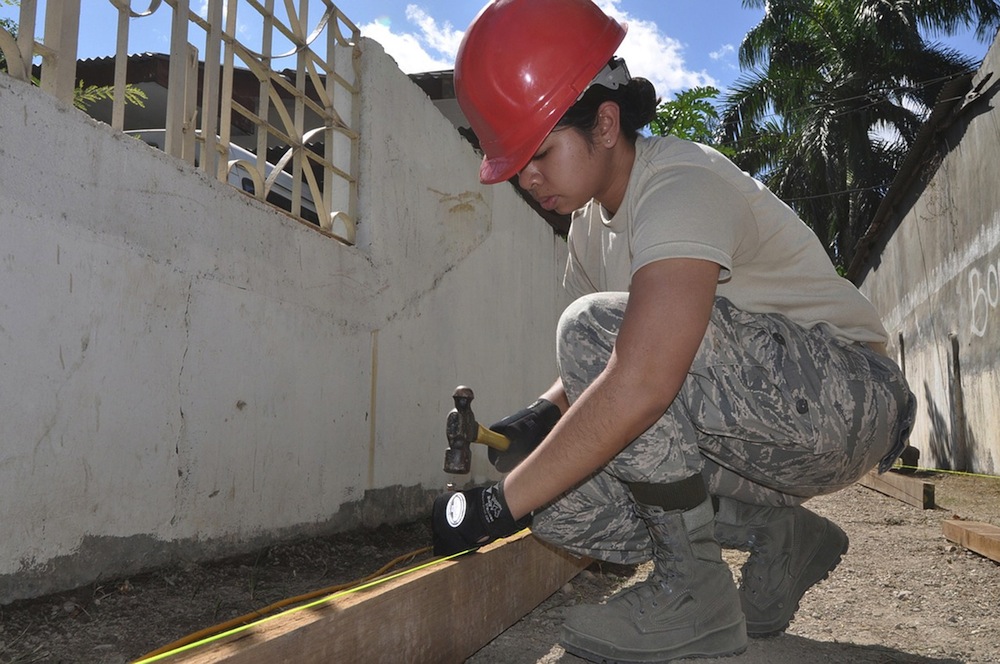Women account for nearly 47% of America’s workforce, according to the Bureau of Labor Statistics. But they represent less than 9% of all construction workers.
One of the women in the field is Doreen DiPolito, the 48-year-old president and owner of D-Mar General Contractors in Clearwater, Fla., where she’s been working since 2001. DiPolito has four women workers out of the 15 to 25 people she employs, depending on the time of year. And she’s been having trouble finding HVAC subs.
At a time when a recovering construction industry is facing shortages in many trades, DiPolito is on a mission to encourage women to at least consider construction as a career.
“When a big contract comes to town, I shouldn’t have to partner with one of the large contracting companies in order to get a piece of the set-aside work. But that’s how it still is, and I don’t think that’s right.” —Doreen DiPolito
“With the economic turnaround in Florida and other parts of the country, women owe it to themselves to explore construction career, which offer better earning and advancement potential than many lower-paid, traditionally female-dominated jobs,” she tells BD+C.
Her own experience tells her that women are capable of doing any construction work. A single parent of three, including a special-needs child, DiPolito started out as a mechanical engineer with Honeywell. She joined D-Mar to help out her former mother-in-law when her husband, D-Mar’s owner, died. In 2006, DiPolito earned her Florida General Contractor certificate.
She concedes that construction is not a profession that kids are pushed toward. So her solutions to the industry’s labor shortage problem includes educating girls in middle and high school about alternative career options. She would also like to see vocational and technical schools expand their outreach and access to women students.
However, the biggest obstacle to more women entering the construction field may be the reluctance of parents or counselors to recommend that field. “Construction has gotten a bad rap. But what happens in this country if these skills, like masonry or electrical, disappear?”
DiPolito has put herself forward on this topic because of what she sees as the industry’s systemic gender discrimination, which she says she’s experienced first hand. “When a big contract comes to town, I shouldn’t have to partner with one of the large contracting companies in order to get a piece of the set-aside work. But that’s how it still is, and I don’t think that’s right.”
DiPolito is realistic about the chances that her advocacy is going to result in any immediate changes in the industry’s hiring practices. But she’s taking the longer view in her hope that any influence she might wield will alter the perspective of younger generations about construction.
And she’s not acting in isolation, either. About a year ago, Ashley Schmidt, a business development manager for SmithGroupJJR in Washington D.C., formed a committee to create The Women in Healthcare group, for the purpose of promoting the development of AEC females in the healthcare sector through mentoring and sharing successful techniques, leads, contacts, products, and services.
The group, which covers the Delaware/Maryland/Virginia area, now has a board of directors, and has grown to more than 200 members, according to Brenna Costello, AIA, EDAC, a Principal at SmithGroupJJR. Among the group’s functions are networking and educational events such as the one scheduled for September 17 at Holy Cross Hospital in Germantown, Md., a $202 million facility that opened in 2014. Annice Cody, president of Holy Cross Health Network, and Lora Schwartz, Principal Consultant for CBRE Healthcare, are scheduled to speak about strategic planning and forecasting methodologies.
“The role of our group is to expand and empower,” says Costello, noting that more than 50% of undergraduate degrees are now earned by women.
Related Stories
| Oct 11, 2011
AIA introduces five new documents for use on sustainable projects
These new documents will be available in the first quarter of 2012 as part of the new AIA Contract Documents service and AIA Documents on Demand.
| Oct 7, 2011
GREENBUILD 2011: Schools program receives grant to track student conservation results
To track results, schools will use the newly developed Sustainability Dashboard, a unique web-based service that makes tracking sustainability initiatives affordable and easy.
| Oct 6, 2011
GREENBUILD 2011: NEXT Living EcoSuite showcased
Tridel teams up with Cisco and Control4 to unveil the future of green condo living in Canada.
| Oct 6, 2011
GREENBUILD 2011: Kingspan Insulated Panels spotlights first-of-its-kind Environmental Product Declaration
Updates to Path to NetZero.
| Oct 4, 2011
GREENBUILD 2011
Click here for the latest news and products from Greenbuild 2011, Oct. 4-7, in Toronto.
| Oct 4, 2011
GREENBUILD 2011: Methods, impacts, and opportunities in the concrete building life cycle
Researchers at the Massachusetts Institute of Technology’s (MIT) Concrete Sustainability Hub conducted a life-cycle assessment (LCA) study to evaluate and improve the environmental impact and study how the “dual use” aspect of concrete.
| Sep 28, 2011
Look who's coming to BD+C's Under-40 Leadership Summit
AEC industry "under-40 superstars" from top design and construction firms have signed up for BD+C's "Under-40 Leadership Summit."
| Sep 28, 2011
Bradley sponsors design studio on intelligent buildings for UWM SARUP
The studio is taught by Gregory D. Thomson, assistant professor and co-director of the Institute for Ecological Design at UWM.
| Sep 23, 2011
ABI turns positive after four monthly declines
On the heels of a period of weakness in design activity, the Architecture Billings Index (ABI) took a sudden upturn in August.
| Sep 19, 2011
Portland team hired as LEED and commissioning consultants for $5.5B downtown sustainable project in Qatar
The $5.5 billion sustainable downtown regeneration project underway by Msheireb Properties will transform a 76 acres site at the centre of Doha, Qatar’s capital city, recreating a way of living that is rooted in Qatari culture, attracting residents back to the city center and reversing the trend for decentralization.

















